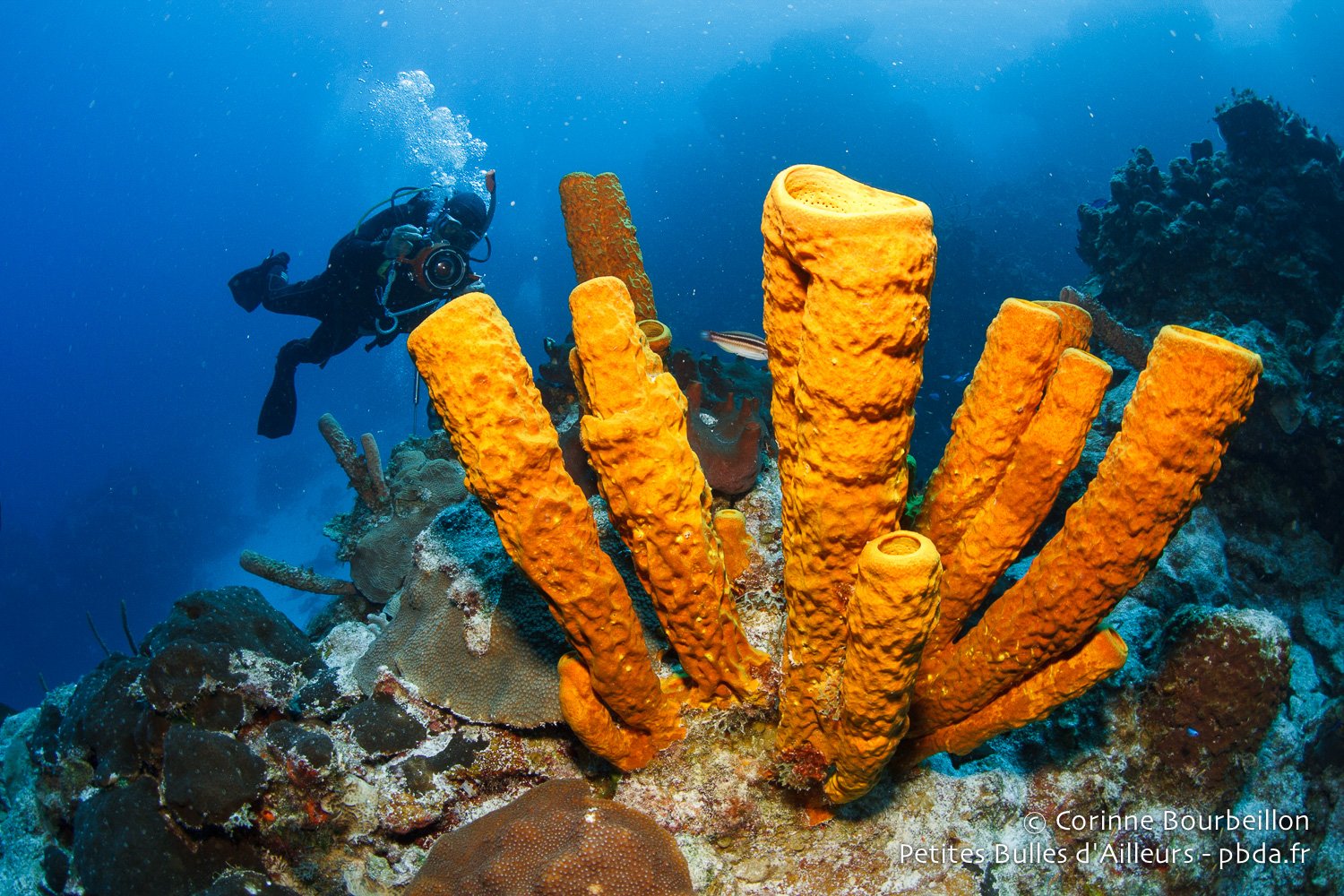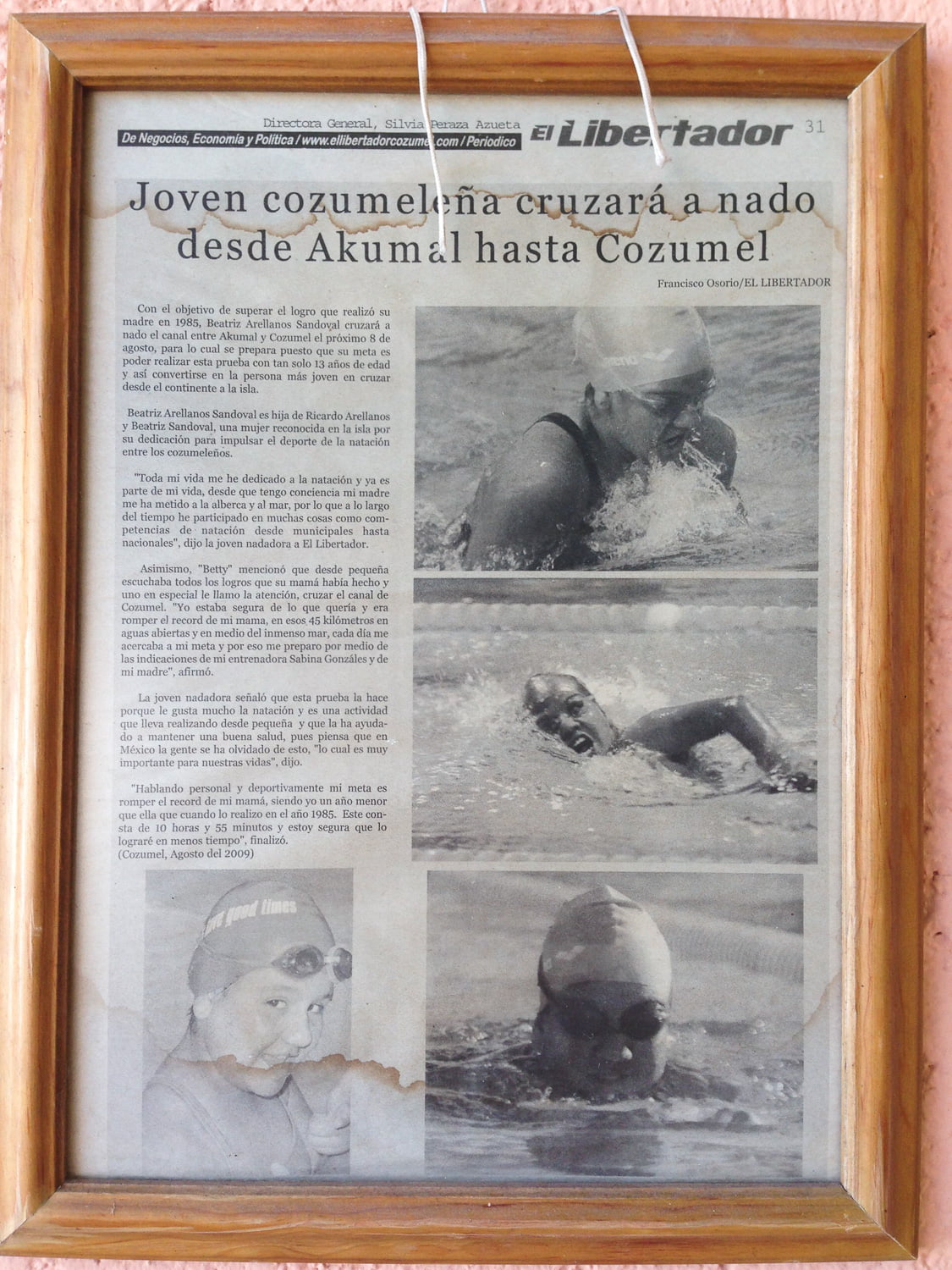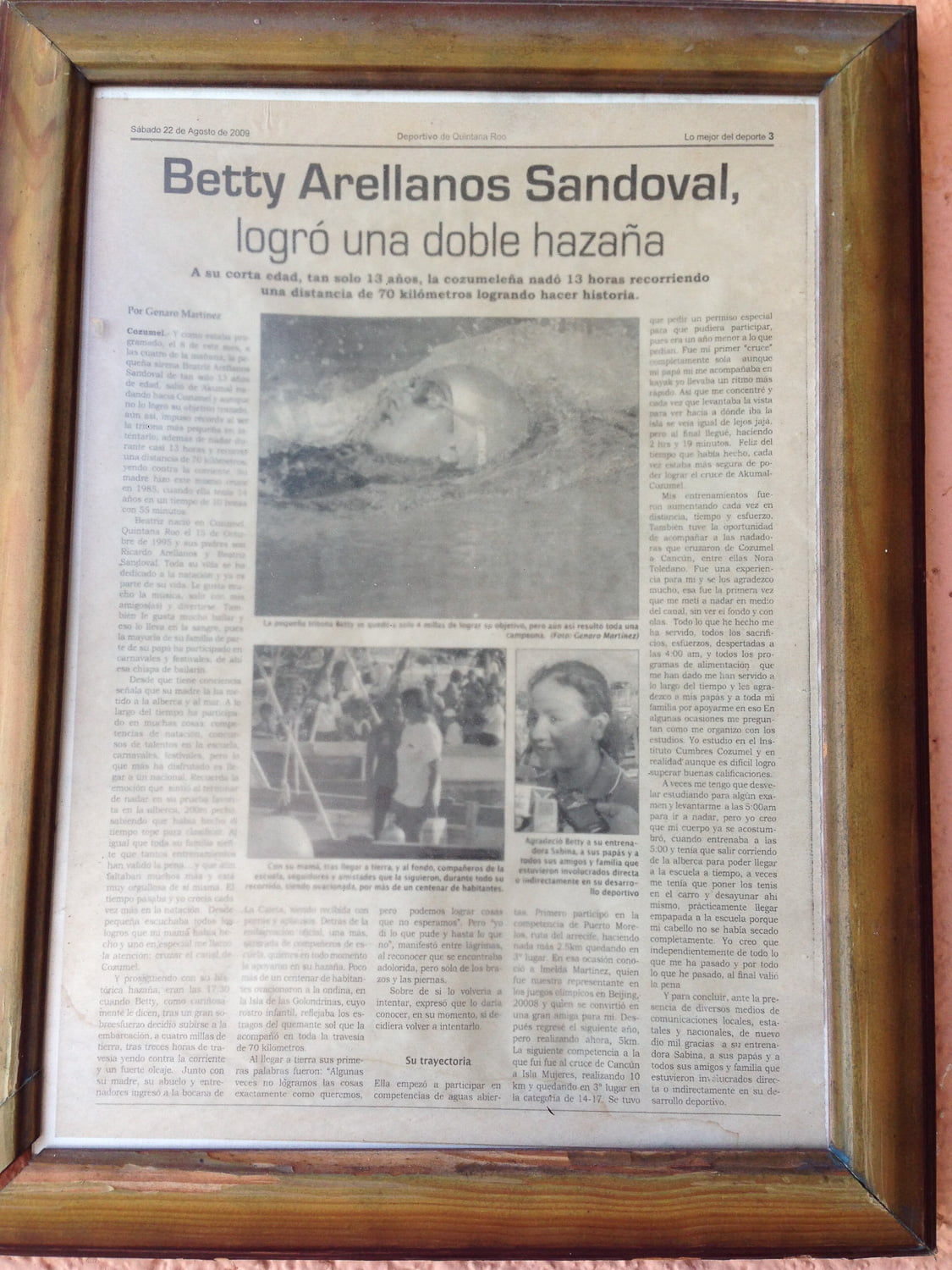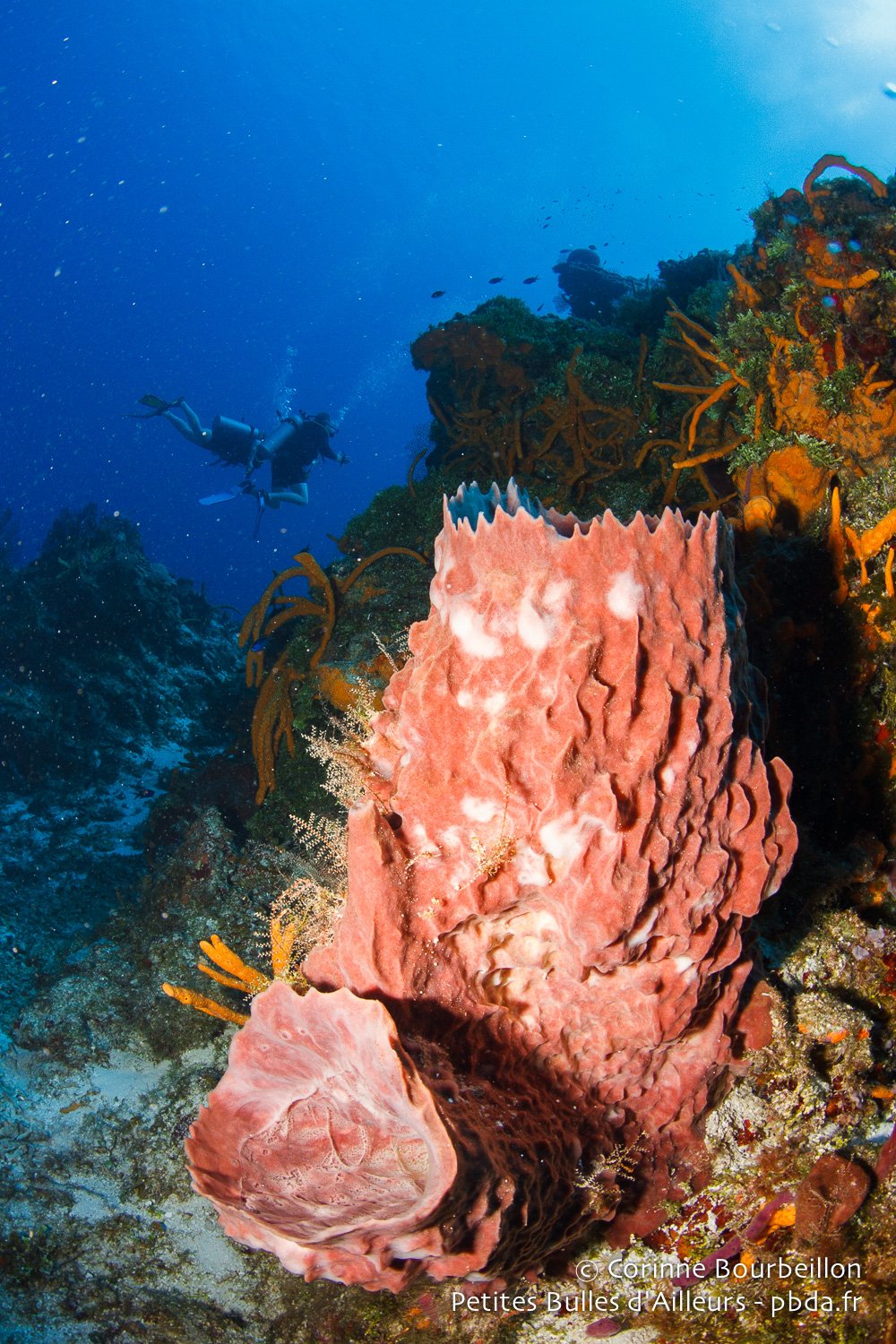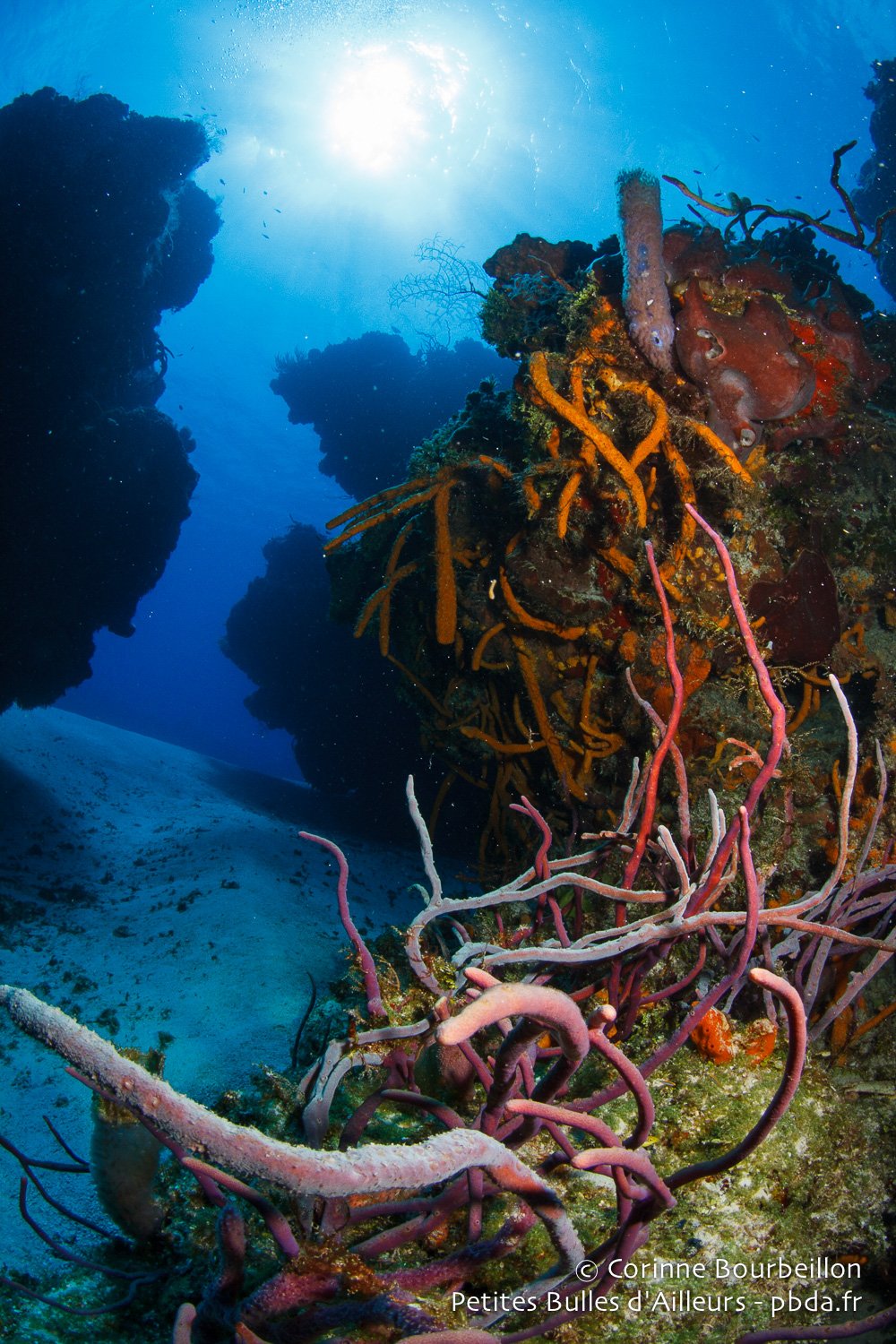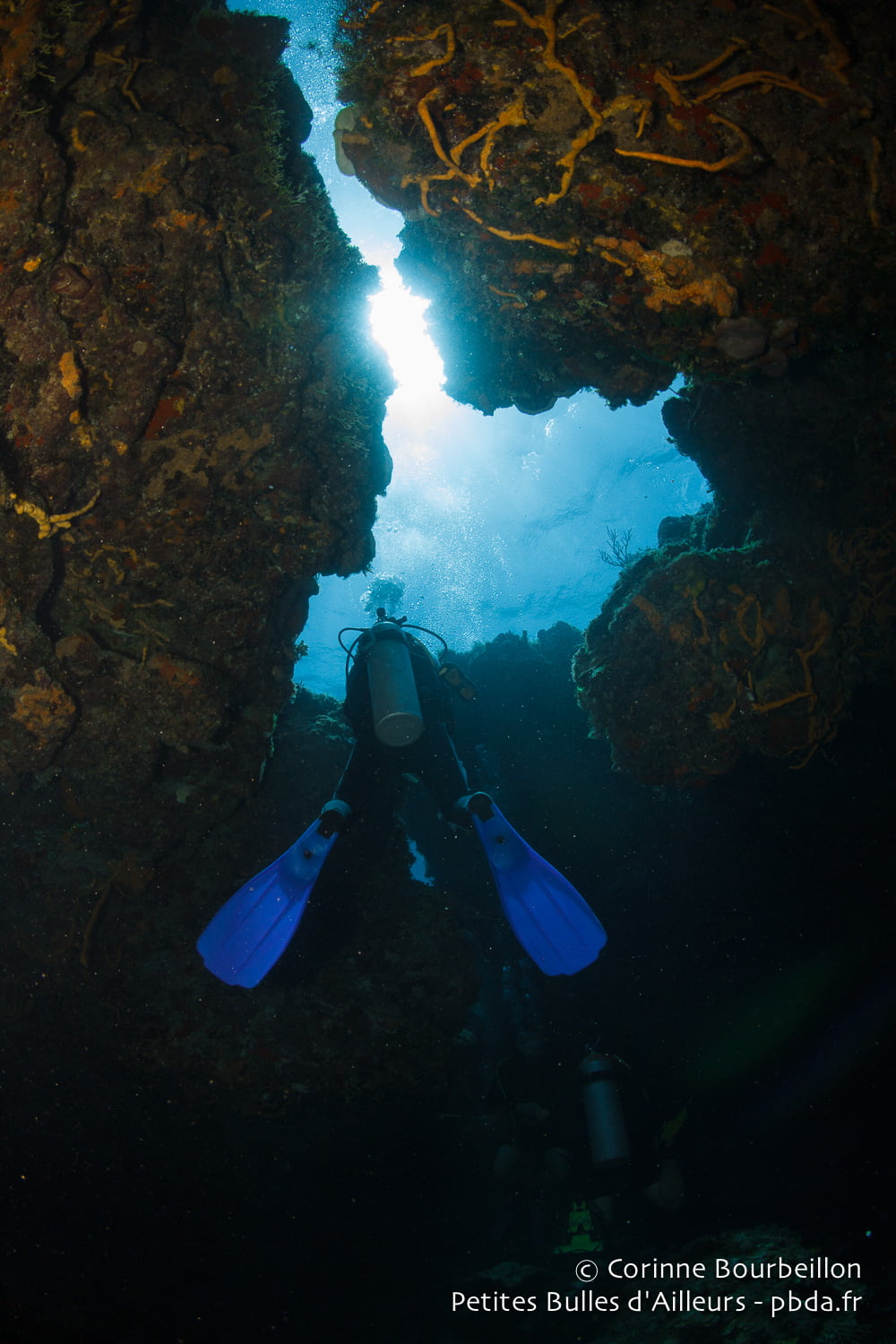Dear English-speaking readers, this page is an automatic translation of an article originally written in French. I apologise for any strange sentences and funny mistakes that may have resulted. If you read French, click on the French flag below to access the original, correct text:
The Caribbean Sea, a change from Asia! In Mexico, I couldn't miss the island of Cozumel, a famous diving spot.
A Mexican summer
July 2014: new exoticism, new underwater world. This summer, I chose to discover the Caribbean coast of Mexico, that of the state of Quintana Roo. The region attracts me for its fabulous cenotes - these engulfed chasms venerated by the Mayas that we can now explore by diving - and its spectacular gathering of whale sharks, off Cancún, which I dream to see for years ...
Between the cenotes and the whale sharks, I could not miss the island of Cozumelexplored by Cousteau in the early 1960s. It is THE diving spot of the Yucatán peninsula, the most famous of the area! Thanks to Cozumel and to diving, I met Sergio, a great character...
Sergio Sandoval, pioneer of diving in Cozumel
His full name: Sergio Sandoval Vizcaíno. A pioneer of diving in Cozumel, where he has lived since 1979, he celebrated his 74th birthday in early 2015 and is still blowing bubbles underwater!
UPDATE - OCTOBER 10, 2018. I just learned, via Facebook, the passing of SergioThat's four years after we met in July 2014... He was 77 years old. I have not been back to Mexico since. I will never have the opportunity to dive again with Sergio, who made me discover the magnificent reef of Cozumel. I let you read or discover below what I wrote at that time.

The man is an inexhaustible storyteller, picturesque as can be. Concerned about his form, he avoids alcohol and drinks sea water regularly, convinced that "it's good for your health" !
He often demonstrates it on his boat, to impress the clients he takes diving... But in fact, he does not drink it pure! He just dilutes a bit of sea water in a bottle of fresh water.
Sergio may be a bottle diver, but he never separates himself from his snorkel, attached to his mask, because it saved his life, a long time ago. Lost at sea after a dive, he drifted for several days in the middle of the sea before being rescued. His snorkel allowed him to breathe on the surface without drinking the cup and not drown.
Former engineer in car mechanics, Sergio is also a passionate underwater photographer and a patient handyman: he makes himself the waterproof housings for his cameras, in his workshop, at home! Finally, this septuagenarian is obviously not "digital native", but since he discovered the GoPro and social networks, he publishes a lot of small underwater movies on Facebook.
Above all, Sergio knows the dive sites of Cozumel and the formidable currents in the strait between Playa del Carmen and the island particularly well. Day after day, on each trip, he monitors the health of the corals and fish, takes pictures underwater and, back on land, praises the beauty of the underwater world of the region to tourists.
He is a passionate and exciting man, warm, multilingual, extraordinarily friendly. I am delighted to have discovered the reef of Cozumel with him.


A very aquatic Mexican family
Sergio's house, in San Miguel, the island's largest city, is known by all cab drivers by two names: Aquaramawhich is now the children's swimming school run by her daughter and granddaughter, whose classes are held in the garden pool (Aquarama is also the name of one of its boats); and Aquatic Sports, which refers to the small diving structure he runs with the help of his wife Lolita.
Involved for a long time in the preservation of the sea bed, Sergio Senior (to distinguish him from Sergio Junior, his son, who bears the same name and also organizes diving and deep-sea fishing trips) is today one of the oldest diving operators in Cozumel. He is also one of the pillars of the Scuba Fest annually, in December.


At Sergio's house, a Virgin Mary watches over the pool from her alcove and newspaper clippings, framed and hung on the walls, salute the aquatic exploits of her daughter and granddaughter, both named Beatriz.
The first, in 1985, at the age of 14, swam the 45 kilometers that separate Cozumel from the coast, in 10 hours and 55 minutes.
A generation later, in 2009, the second, nicknamed "Betty", then 13 years old, tried to beat her mother's record, but unfortunately the currents carried her too far from the island, preventing her from reaching her goal. The little one swam all the same for almost 13 hours in a row... At the Sandoval's, we really love water, it runs in the family!!!
The fabulous reef of Cozumel
For the underwater photographer that I am, who appreciates "à la carte" dives and preferably in small groups, Sergio's family structure is ideal. As he is also a photographer, I often finish the dives with him, while Cristobal, his young dive-master, supervises the rest of the group.
Between two dives, it's a "salsa-guacamole-ham-cheese-fruit" picnic on the boat Aquarama. The atmosphere is relaxed and international.
During this week spent in Cozumel, I dive, depending on the day, with a young Belgian couple, an American, a German and a Japanese couple, with whom I discover common knowledge in Indonesia - they often dive in Asia, like me. They are great friends of Sergio and Lolita, they regularly come on holiday to Cozumel.
Underwater I discover a different environment than what I am used to in Asia. The species of rays, for example, are not at all the same. There is also an abundance of large angelfish (from the family of Pomacanthus, says a reader of the blog) that reminds me of the Asian batfish.
And then, in these waters, the flying scorpion fish is an invader: These fish, originally from Asia, have been introduced into the Mexican waters of the Caribbean Sea, where they have no predators. They are voracious and proliferate at the expense of other species, unbalancing the ecosystem. Diving professionals are allowed to kill them when they see them.
Update - May 3, 2015 : AFP has just published an infographic on the subject, which sums up the situation well. I insert their picture below.

The reef of Cozumel is much more beautiful than the sites on the opposite side of the coast, around Playa del Carmen. I had a great pleasure to explore it, even if I found it overall less exuberant and full of life than the Indonesian or Malaysian spots I like so much.
The "usual" tropical fauna is well present, but the density and diversity seem to me less... Which does not prevent from making beautiful meetings, the proof!
My favorite sites on the Cozumel Reef are in the area called PalancarThere are huge and spectacular coral formations. Their yellow and pink outgrowths look great under the flash light.
For divers, it is a fantastic playground: there are caves to explore, arches and passages where you can sneak in and a lot of life to observe.
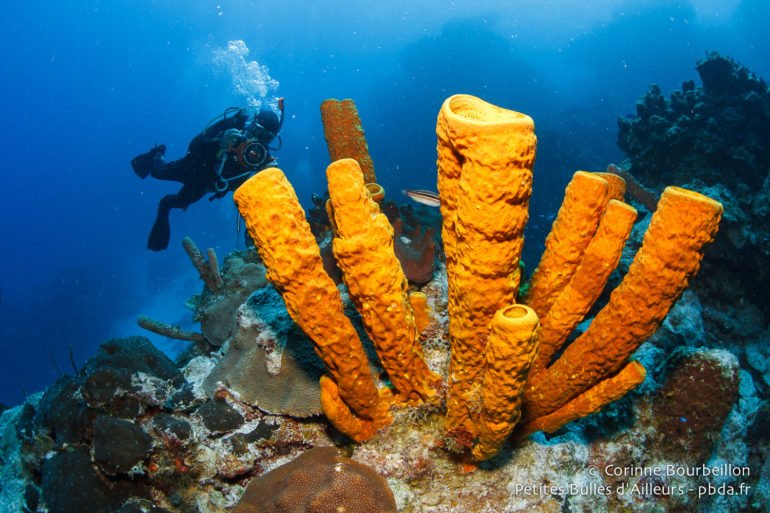


To learn more about diving with Sergio Senior in Cozumel, I refer you to these links:
→ The Aquatic Sports Center website
→ His Facebook page

